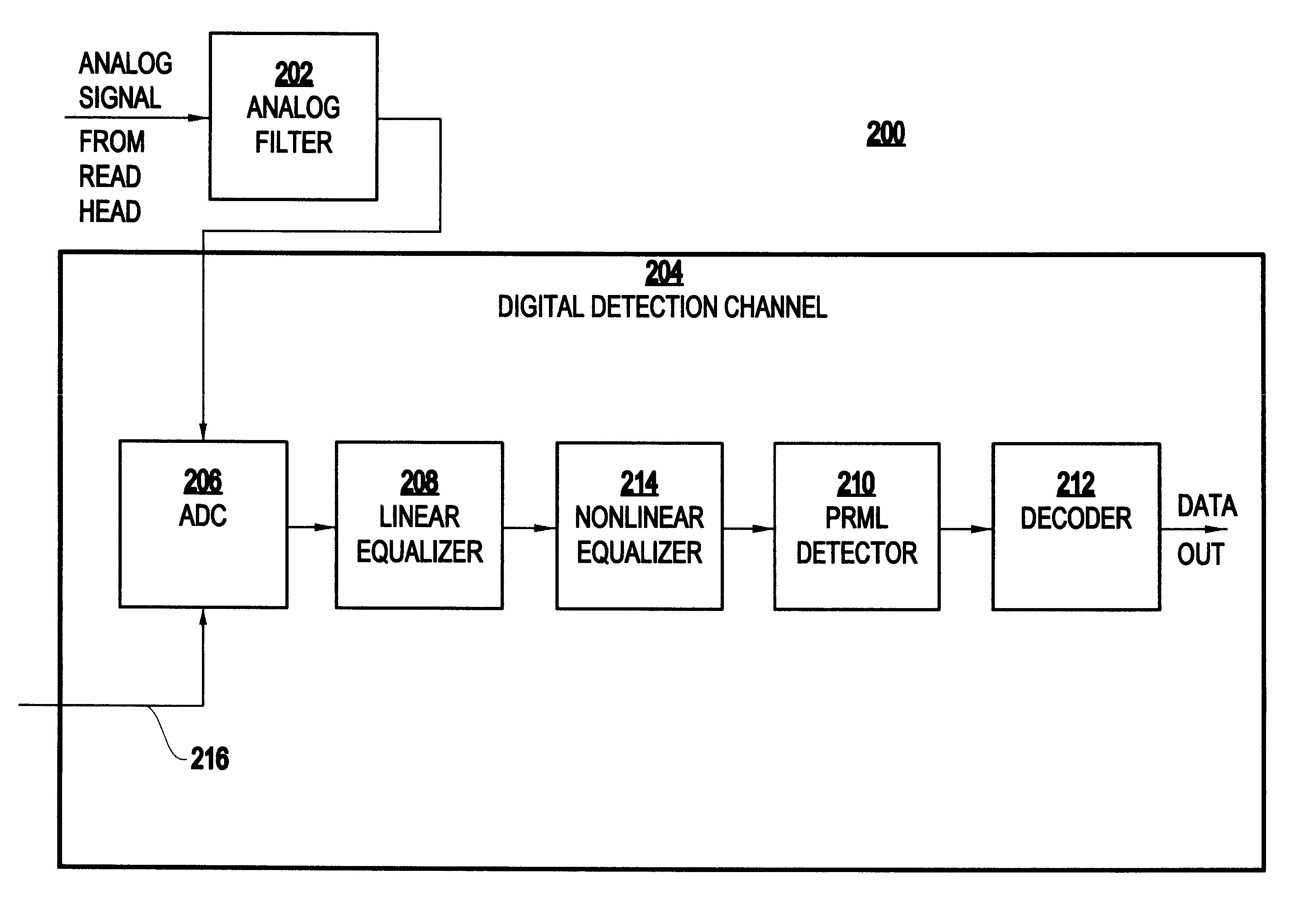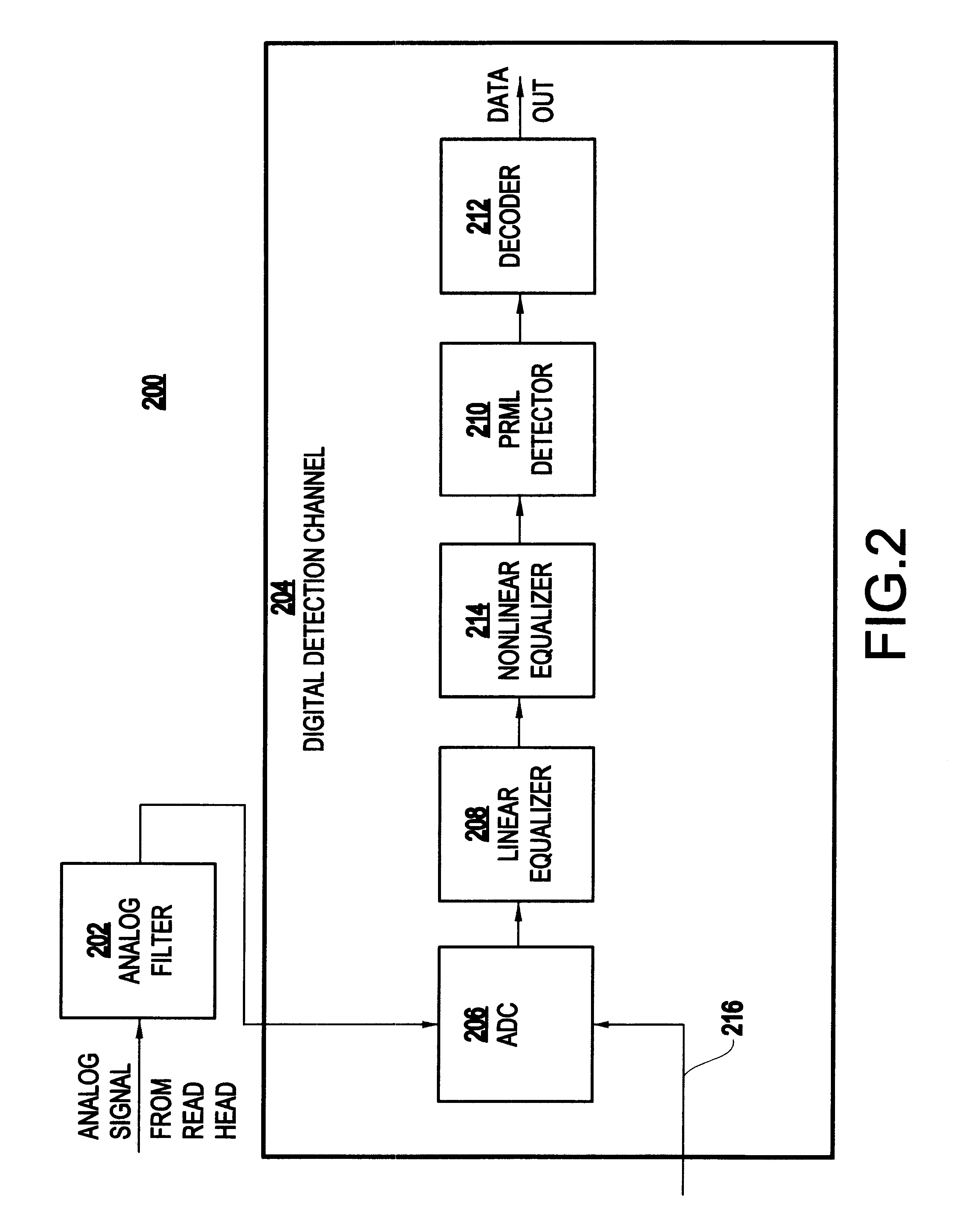Nonlinear equalizer and decoding circuit and method using same
a decoding circuit and equalizer technology, applied in the field can solve the problems of significant reduction in signal amplitude, inability to sufficiently eliminate nonlinear isi in high density recording systems, and severe nonlinearity of digital magnetic recording systems
- Summary
- Abstract
- Description
- Claims
- Application Information
AI Technical Summary
Benefits of technology
Problems solved by technology
Method used
Image
Examples
Embodiment Construction
Referring now to the drawings, FIG. 2 is a block diagram showing a preferred embodiment of a data recovery circuit 200 according to the present invention.
As indicated in FIG. 2, in response to a read request, an analog signal from a read head is filtered by analog filter 202. The filtered analog signal is then applied to the digital detection channel 204 which includes an analog-to-digital converter (ADC) 206, linear equalizer 208, nonlinear equalizer 214, a partial response maximum likelihood (Viterbi) detector 210, and a decoder 212.
In the ADC 206, the filtered signal is sampled by clock 216. In conventional data recovery circuits, the analog-to-digital circuit typically samples the analog signal according to partial response, class IV metrics. However, in the inventive circuit 200, the ADC 206 samples the analog signal according to "PR4 wide" (PR4W) metrics so as to output a partial response sampled signal having four nonzero samples.
The PR4W sampling metric was created by the in...
PUM
| Property | Measurement | Unit |
|---|---|---|
| phase relations | aaaaa | aaaaa |
| densities | aaaaa | aaaaa |
| Density | aaaaa | aaaaa |
Abstract
Description
Claims
Application Information
 Login to View More
Login to View More - R&D
- Intellectual Property
- Life Sciences
- Materials
- Tech Scout
- Unparalleled Data Quality
- Higher Quality Content
- 60% Fewer Hallucinations
Browse by: Latest US Patents, China's latest patents, Technical Efficacy Thesaurus, Application Domain, Technology Topic, Popular Technical Reports.
© 2025 PatSnap. All rights reserved.Legal|Privacy policy|Modern Slavery Act Transparency Statement|Sitemap|About US| Contact US: help@patsnap.com



